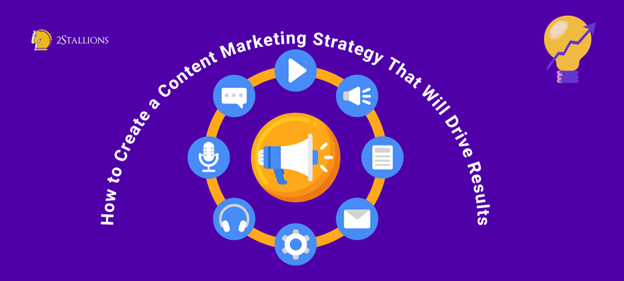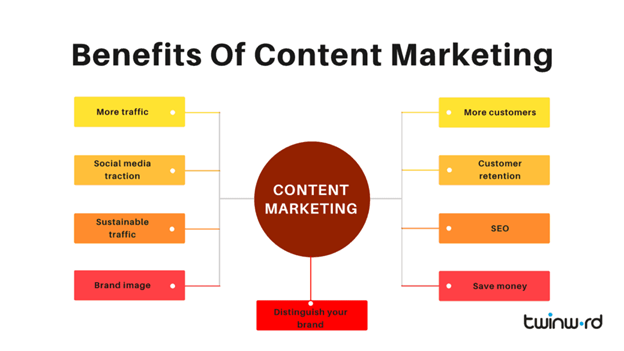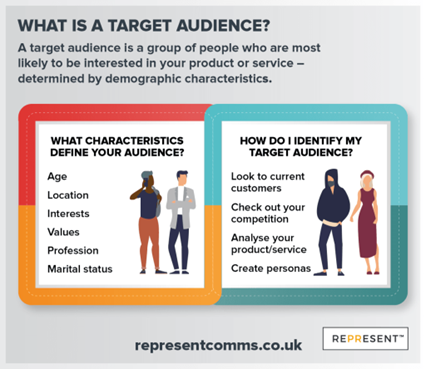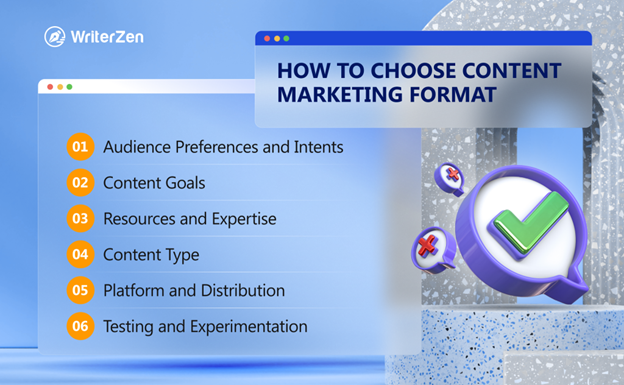SHARE

In today’s digital landscape, having a well-planned content marketing strategy is vital for any business looking to drive results and stand out from the competition. Understanding the importance of a content marketing strategy is the first step towards achieving your marketing goals.
[thrive_leads id=’8320′]
Understanding the Importance of a Content Marketing Strategy
In the rapidly evolving online world, content marketing has become the backbone of successful marketing campaigns. It involves creating and distributing valuable, relevant, and consistent content to attract and engage your target audience. With a carefully crafted content marketing strategy, you can not only increase brand awareness but also establish your business as a thought leader in your industry.
Content marketing is like a well-oiled machine that keeps your business running smoothly in the digital landscape. It is the fuel that powers your online presence and helps you stay ahead of the competition. By consistently delivering high-quality content, you can build trust and credibility with your audience, positioning yourself as an expert in your field.
The Role of Content Marketing in Today’s Digital Landscape
Content marketing plays a pivotal role in today’s digital landscape. It allows businesses to connect and engage with their target audience on a deeper level. By providing valuable information through various content formats such as blog posts, videos, infographics, and podcasts, businesses can establish credibility and build lasting relationships with their customers.
Imagine a scenario where you are searching for information on a particular topic. You come across a website that not only provides the information you need but also presents it in a visually appealing and easy-to-understand manner. This is the power of content marketing. It not only educates and informs but also captivates and inspires. It creates a connection between the brand and the audience, fostering a sense of loyalty and trust.

(Source: Wilhaus, D. (2021, January 12). What is Content Marketing? Benefits & How-To – Twinword. Twinword. https://www.twinword.com/blog/content-marketing-guide/)
Key Benefits of a Well-Planned Content Marketing Strategy
A well-planned content marketing strategy comes with numerous benefits. Firstly, it helps generate organic traffic to your website, as high-quality content increases your search engine rankings. When your content is optimised for search engines, it becomes more discoverable, attracting a larger audience and driving more traffic to your site.
Secondly, a well-executed content marketing strategy enables you to nurture leads and convert them into loyal customers. By providing them with valuable and relevant content throughout their buyer’s journey, you can guide them towards making a purchase decision. This not only increases your conversion rates but also enhances customer satisfaction and loyalty.
Lastly, a well-crafted content marketing strategy helps build brand authority and create a strong brand identity. When you consistently deliver valuable content that addresses your audience’s pain points and provides solutions, you establish yourself as a trusted source of information. This builds credibility and positions your brand as an industry leader, making it easier to attract and retain customers.
Content marketing is an essential component of any successful marketing strategy. It allows businesses to connect with their audience, build trust, and establish themselves as thought leaders in their industry. By investing in a well-planned content marketing strategy, you can reap the benefits of increased brand awareness, organic traffic, customer loyalty, and brand authority.
Defining Your Content Marketing Goals
Before diving into creating your content marketing strategy, it is crucial to define your goals. Setting measurable and achievable goals ensures that your efforts are aligned with your business objectives and that you can track your progress effectively.
Setting Measurable and Achievable Goals
When setting your content marketing goals, make sure they are specific, measurable, attainable, relevant, and time-bound (SMART). For example, your goal could be to increase website traffic by 20% within six months or to generate 100 new leads per month through content marketing efforts. By setting clear goals, you can focus your efforts and measure the success of your strategy.
Aligning Your Content Marketing Goals with Your Business Objectives
Your content marketing goals should align with your overall business objectives. Whether you aim to increase brand awareness, drive sales, or establish your business as an industry leader, your content marketing strategy should support these objectives. For example, if your business objective is to increase brand awareness, your content marketing goal could be to reach a wider audience through engaging and shareable content.

(Source: Represent. (2019, February 4). What is a target audience and how do I identify mine? Represent. https://representcomms.com/what-is-a-target-audience-and-how-do-i-identify-mine/)
Identifying Your Target Audience
When it comes to content marketing, understanding your target audience is paramount. By identifying who your audience is and what they are looking for, you can tailor your content to meet their needs and preferences.
The Importance of Audience Segmentation in Content Marketing
Audience segmentation involves dividing your target audience into distinct groups based on their demographics, interests, and behaviours. This segmentation enables you to create personalised content that resonates with each group. By understanding your audience segments, you can deliver content that addresses their pain points and provides valuable solutions.
How to Create Detailed Audience Personas
To create detailed audience personas, start by conducting market research to gather data about your target audience. Utilise sources such as surveys, social media analytics, and customer feedback to gain insights into their preferences, challenges, and aspirations. Once you have gathered the necessary information, develop fictional personas that represent each segment. Give each persona a name, age, occupation, and other characteristics that reflect your target audience’s demographics and psychographics. These audience personas will serve as a blueprint for creating relevant and impactful content.
Conducting a Content Audit
Before diving into creating new content, it is essential to conduct a content audit to assess the effectiveness of your existing content and identify areas for improvement.
What is a Content Audit and Why is it Necessary?
A content audit is a systematic examination of all your existing content to evaluate its quality, relevance, and performance. It helps you understand what content you have, what content is missing, and what content needs to be updated or repurposed. By conducting a content audit, you can ensure that your future content aligns with your content marketing goals and resonates with your target audience.
Steps to Perform an Effective Content Audit
- Start by creating an inventory of all your existing content, including blog posts, videos, whitepapers, and social media posts.
- Analyse each piece of content based on its relevance, quality, and engagement metrics such as page views, social shares, and comments.
- Identify gaps in your content, such as topics that have not been covered or outdated information that needs to be refreshed.
- Decide which content pieces should be repurposed or updated to align with your current content marketing goals.
- Create a content calendar or plan for creating new content that fills the gaps and meets your audience’s needs.

(Source: 10 Content Marketing formats: How to choose which to use. (2024, January 18). WriterZen. https://writerzen.net/blog/content-marketing-format)
Choosing the Right Content Formats
Once you have a clear understanding of your goals, target audience, and existing content, it’s time to choose the right content formats that will engage your audience and deliver your message effectively.
Exploring Different Types of Content Formats
There are various content formats to choose from, such as blog posts, videos, infographics, podcasts, and interactive quizzes. Each format has its strengths and can be used to convey different types of information. For example, blog posts are great for providing detailed information, while videos are ideal for demonstrating products or sharing testimonials. Consider your audience preferences, the type of content you want to create, and the platforms where your audience is most active.
Matching Content Formats with Audience Preferences
Understanding your audience’s preferences is crucial when selecting content formats. Analyse the data gathered during audience segmentation to determine which formats resonate most with your target audience. If your audience prefers visual content, invest in creating high-quality infographics or videos. If your audience prefers in-depth information, focus on creating comprehensive blog posts or whitepapers. By matching content formats with your audience’s preferences, you can deliver content that captures their attention and encourages engagement.
By following these essential steps, you can create a content marketing strategy that drives results, enhances brand visibility, and ultimately helps your business succeed in the digital landscape. Remember to regularly review and adapt your strategy based on audience feedback and changes in the market to stay ahead of the competition. With a well-executed content marketing strategy, your business can achieve its marketing goals and build a loyal customer base.
[thrive_leads id=’3540′]
Frequently Asked Questions About Content Marketing
What Are The 5 C'S Of Content Marketing?
To excel in content marketing, one must understand the 5 C’s: Clarity, Conciseness, Compelling, Credible, and Call to Action.
What Does A Content Marketer Do?
A content marketer is a person who plans, researches, creates, distributes, and analyses content with the aim of attracting and engaging potential customers. They typically generateblog posts, how-to guides, videos, infographics, white papers, and more.
What Is Content Marketing Or SEO?
While the debate focuses on SEO vs. content marketing, the reality is that you should use these two strategies together. SEO helps people find your content, while content helps drive traffic to your site and improves your ranking. A successful content marketing strategy requires SEO and vice versa.
Is Content Marketing A Skill?
A content marketer needs training on how the sales funnel works and how content fits into each stage. When content marketers have this skill, they can create pieces of content that will turn visitors into leads and leads into customers.
Is Content Marketing A Tool?
Content marketing is a lead generation tool, but it also increases brand awareness, sales, reach, customer interactions and engagement, and loyalty.









